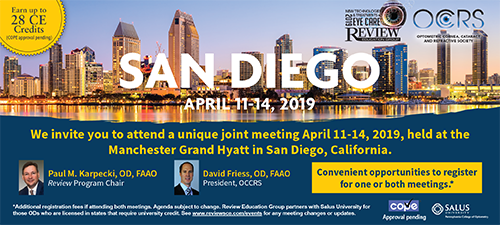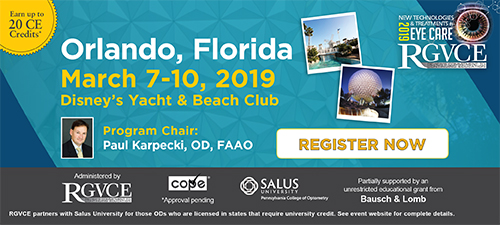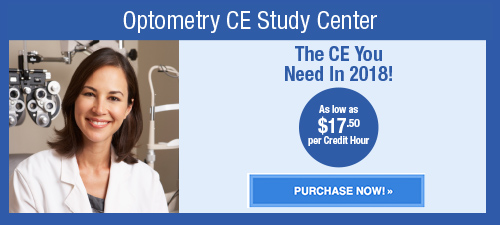
A
weekly e-journal by Art Epstein, OD, FAAO
Off the Cuff: Famous People I Met or Almost Met on Airplanes
Shannon and I are in Rotorua, New Zealand, for the New Zealand Cornea and Contact Society Conference. It is a beautiful place and our Kiwi colleagues are amazingly warm and welcoming. It is impossible to not fall in love with New Zealand. On a flight from New York to St. Louis, Yakov Smirnoff, Russian Cold War comic, and I spent an enjoyable two hours lost in deep conversation. On a flight from Atlanta to Omaha, Orlando Jones and I traded jokes and kept the entire first-class cabin in stitches. He drank Coke, not 7-Up, by the way. During a lengthy storm delay heading home to New York, I had an insightful chat with OJ DNA attorney Barry Scheck. All of these encounters were memorable. In the not-so-enjoyable category, on a flight to Seoul, Sheryl Crow only spoke to her nanny, barely noticing anyone else was on the same flight. Michael Ironside of the Next Karate Kid fame, if there is such a thing, strutted around the cabin of an Atlanta to San Diego flight trying to get recognized without success. I felt bad for the guy, but didn’t want to risk getting karate chopped. In the too-close-for-comfort category, the piece missing from Evander Holyfield’s ear was larger than I imagined, as the giant of a man sat next to me, paging through what appeared to be a family album. It took an incredibly brave flight attendant to make him move to his assigned bulkhead seat. Although I was tempted, I didn't say a word. I didn’t want to risk chewing his ear off (sorry, I couldn’t resist). When I delayed the last flight from Dallas to Phoenix due to a late connection, a visibly pissed-off Shaq glared at me as I breathlessly settled into the seat right in front of him. I felt him glaring the entire flight. Finally, heading my wished-I-had-but-didn’t encounters was the time I stood next to J.K. Simmons when our early morning flight from LaGuardia to Chicago was cancelled. Back then, I was a regular at the LGA Delta Crown Room, and they always took care of me—rebooking delayed and cancelled flights. At the time, Simmons played the very scary Vern Schillinger, a white supremist on the very scary show, Oz. As I turned to head to the club, I thought about inviting him to join me and decided that he actually scared me, brave guy that I am. Today, a fan of his work in numerous movies, television series and most notably his “we’ve seen a thing or two” State Farm commercials, I wish I had invited him. As I write this, I realize that I have at least another half a dozen celebrity encounters that I can think of, and even more poignantly, that I fly way too much. See you next week…
|
|||||
 |
||
| Early Macular Angiography Among Patients with Glaucoma and Ocular Hypertension, and Normal Subjects | ||||
A retrospective cross-sectional study was conducted to evaluate early macular circulation in open-angle glaucoma (OAG), normal-tension glaucoma (NTG), ocular hypertension (OHT) and healthy subjects via optical coherence tomography angiography (OCTA). Medical records were reviewed, and the patients who received OCTA examinations were divided into OAG, NTG, OHT and normal groups. The ophthalmic data including best-corrected visual acuity, spherical equivalent, intraocular pressure, central corneal thickness, central foveal thickness, visual field deviation, retinal nerve fiber layers thickness and ganglion cell complex thickness were obtained from medical documents. For the macular area, the superficial vessel density (VD), deep VD, foveal avascular zone (FAZ), flow area of the outer retina and flow area of the choriocapillaris were measured via OCTA and analyzed using the default vascular density analysis program in the same OCTA device.
A total of 70 eyes from 70 patients were analyzed in the current study. Significant differences in the intraocular pressure, central corneal thickness, visual field deviation, retinal fiber layer thickness and ganglion cell complex thickness were observed in patients in the glaucoma group at their last visits. The OAG and NTG groups evinced a lower superficial VD than did the control group, while the NTG group had a lower deep VD than the control group. The NTG group also had a larger FAZ than did the OHT group. The flow area of the outer retina in the OAG group was low relative to those of the OHT and control groups. No difference in choriocapillaris perfusion was observed among the groups. Researchers wrote that OAG and NTG patients demonstrated impaired vasculature before significant disease development could be observed. Furthermore, they added, differences in macular circulation might be associated with differences in the courses of disease between glaucoma and OHT patients. |
||||
SOURCE: Chao SC, Yang SJ, Chen HC, et al. Early macular angiography among patients with glaucoma, ocular hypertension, and normal Subjects. J Ophthalmol. 2019;2019:7419470. |
||||
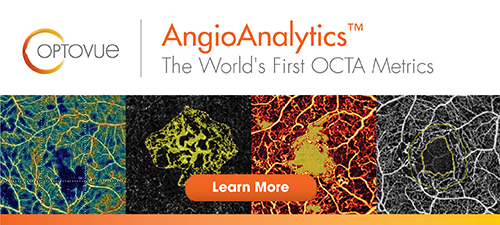 |
||
| Impact of Corneoscleral Contact Lens Usage on Corneal Biomechanical Parameters in Keratoconic Eyes | ||||
This study analyzed the changes in corneal biomechanical parameters of keratoconic eyes with and without intracorneal ring segment (ICRS) implants after one year of corneoscleral contact lens (CScL) wear. Seventy-four eyes of 74 patients were divided into three groups: healthy subjects (29 eyes, control group), and two groups of subjects with keratoconic eyes (one group of 20 eyes with ICRS implants and one of 25 eyes without them), which were fitted with CScL. Corneal hysteresis (CH), corneal resistance factor (CRF) and corneal-compensated intraocular pressure (IOPcc) were evaluated before fitting CScL and after one year of CScL wear. In addition, endothelial cell count (ECC) and central corneal thickness (CCT) were also recorded.
Corneal biomechanical parameters were lower in keratoconic corneas than in healthy corneas. Keratoconic eyes with ICRS implants had lower values than eyes without them for CH (mean±SD, 8.09mm Hg±1.29mm Hg vs. 8.63mm Hg ± 1.5mm Hg, respectively), CRF (6.99mm Hg ±1.38mm Hg vs. 8.37mm Hg ± 1.52mm Hg, respectively), and also for CCT and ECC. Data for IOPcc were similar in all groups. After one-year wearing of CScL, no statistically significant differences in corneal biomechanical parameters were registered in any of the groups, although slight differences (0.13mm Hg to 0.27mm Hg) were found. Investigators found that the viscoelasticity properties of the cornea did not change significantly when wearing corneoscleral contact lenses for one year. Therefore, they suggested that the lenses seemed to be safe and healthy and were a reasonable alternative option for keratoconus management. |
||||
SOURCE: Porcar E, Montalt JC, España-Gregori E, et al. Impact of corneoscleral contact lens usage on corneal biomechanical parameters in keratoconic eyes. Eye Contact Lens. 2019; Feb 4. [Epub ahead of print]. |
||||
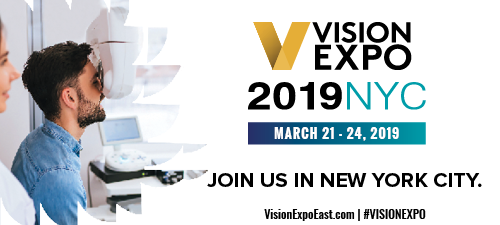 |
||
| Dry Eye Disease Ranking Among Common Reasons for Seeking Eye Care in a Large US Claims Database | ||||
Dry eye disease (DED) is a complex multifactorial condition of the ocular surface characterized by symptoms of ocular discomfort, irritation and visual disturbance. Data previously reported from this study showed an increase in prevalence and incidence of DED with age and over time. The objective of this study was to compare the ranking of DED prevalence among other ocular conditions that led patients to seek eye care. In this population-based study using the US Department of Defense Military Health System claims database of >9.7 million beneficiaries, indicators of DED and other ocular conditions were analyzed over time. The overall prevalence (2003 to 2015) and annual incidence (2008 to 2012) of DED and other ocular conditions were estimated using an algorithm. The algorithm was based on two independent indicators derived from selected diagnostic and procedure codes, and prescriptions for cyclosporine ophthalmic emulsion for DED and diagnostic codes for the indicators of other common ocular conditions. Between 2003 and 2015, the most common ocular conditions were disorders of refraction and accommodation (25.84%), cataracts (17.14%), glaucoma (7.27%), disorders of the conjunctiva (6.76%), other retinal disorders (5.94%) and DED (5.28%). DED was the fifth most prevalent ocular condition in women (7.78%) and ninth most prevalent in men (2.96%). In 2012, DED had the third highest annual incidence (0.87%), behind disorders of refraction/accommodation (1.87%) and cataracts (1.50%). This study provided further epidemiologic evidence for DED as a commonly occurring condition that drives patients to seek treatment. |
||||
SOURCE: Bradley JL, Özer Stillman I, Pivneva I, et al. Dry eye disease ranking among common reasons for seeking eye care in a large US claims database. Clin Ophthalmol. 2019;13:225-232. |
||||
| News & Notes | |||||||||||||||
| Eaglet Eye Upgrades Eye Surface Profiler Eaglet Eye announced an upgrade to its Eye Surface Profiler software that brings the total number of designs embedded to more than 35. The software can now calculate four quadrant peripheries, bi-toric sclerals and toric haptics. And SmartMerge technology enables practitioners to combine up to five full images for optimal coverage should one image not have sufficient data. The software upgrade is expected to be released after thorough testing in upcoming weeks. Eaglet is offering the upgrade to ESP users worldwide. Learn more. |
|||||||||||||||
| Oyster Point Raises to Develop Novel DED Treatment Oyster Point Pharma announced a $93 million Series B financing co-led by Invus Opportunities and Flying L Partners in collaboration with Falcon Vision. The company will use the proceeds to support development of its product portfolio for dry eye disease, among other initiatives. The company’s lead product candidates, OC-01 and OC-02, are delivered via an ocular surface-sparing nasal spray designed to stimulate the trigeminal parasympathetic pathway to promote natural tear film production. In Phase IIb clinical studies, patients administered either OC-01 or OC-02 experienced rapid and significant improvements in DED signs and symptoms. Read more. |
|||||||||||||||
| RightEye Introduces Functional Vision EyeQ Automated Test to Measure Dynamic Vision Skills RightEye launched Functional Vision EyeQ, an automated test that enables optometrists to quickly and objectively identify functional vision issues that affect a host of everyday activities. Once a problem is identified, Functional Vision EyeQ automatically recommends computer-based exercises for patients to do at home, under the supervision of their optometrist. Functional Vision EyeQ demonstrated at RightEye during SECO 2019 in New Orleans. Through a series of quick, gamified tests, Functional Vision EyeQ is able to identify issues with dynamic vision skills, including eye alignment, eye teaming, depth perception, object tracking, gross visual motor, and visual perception and integration. Once completed, the test generates reports that foster doctor-patient communication and understanding of identified conditions, as well as a customized home-based treatment plan. Functional Vision EyeQ tests are conducted using the RightEye eye-tracking system tracking eye movements and correlating them to health issues. Read more. |
|||||||||||||||
|
|||||||||||||||
|
|||||||||||||||
|
Optometric Physician™ (OP) newsletter is owned and published by Dr. Arthur Epstein. It is distributed by the Review Group, a Division of Jobson Medical Information LLC (JMI), 11 Campus Boulevard, Newtown Square, PA 19073. HOW TO ADVERTISE |


